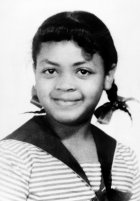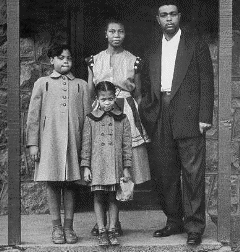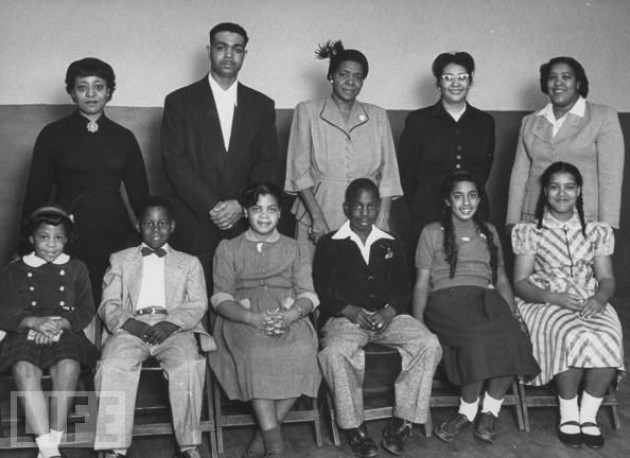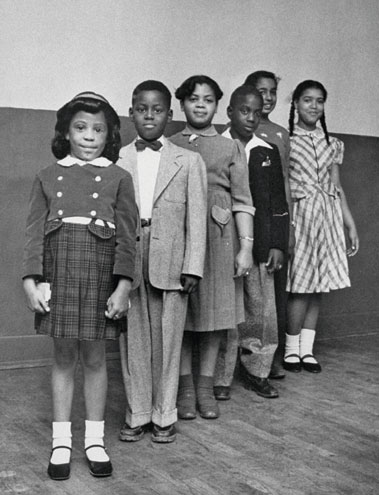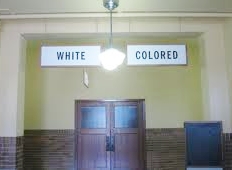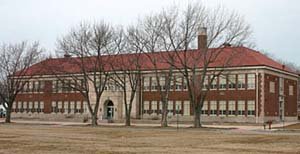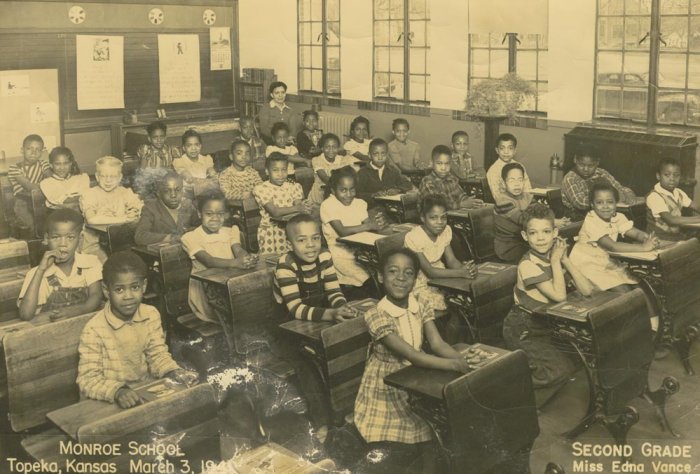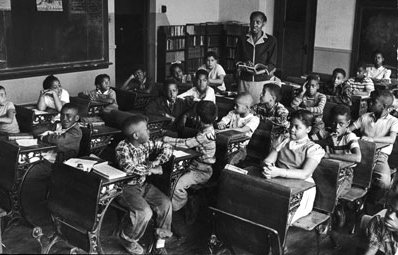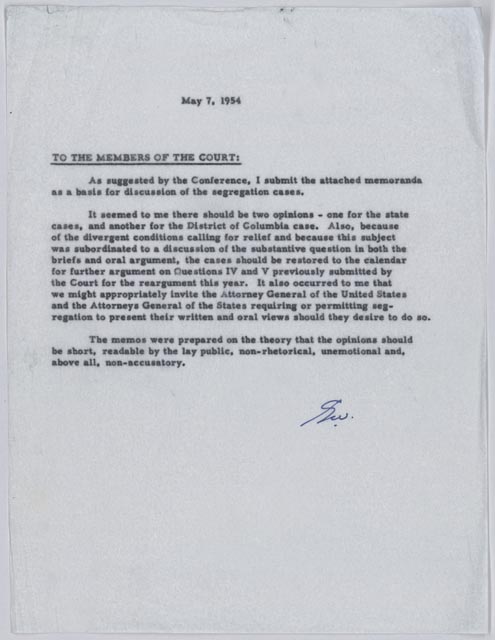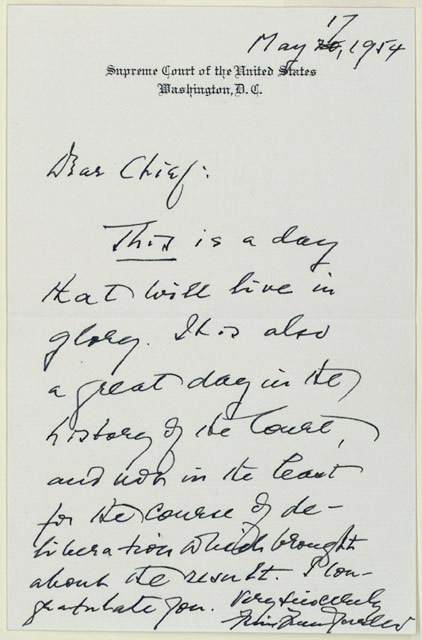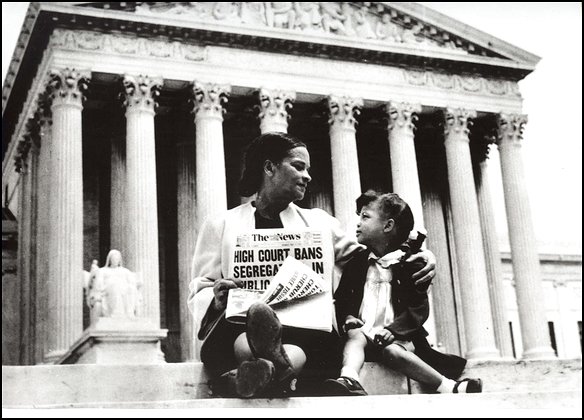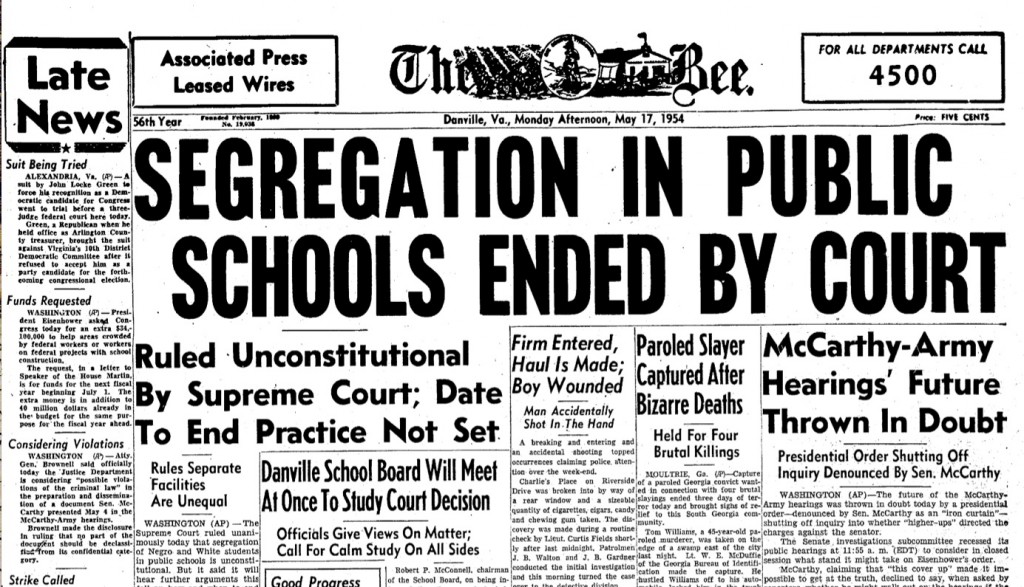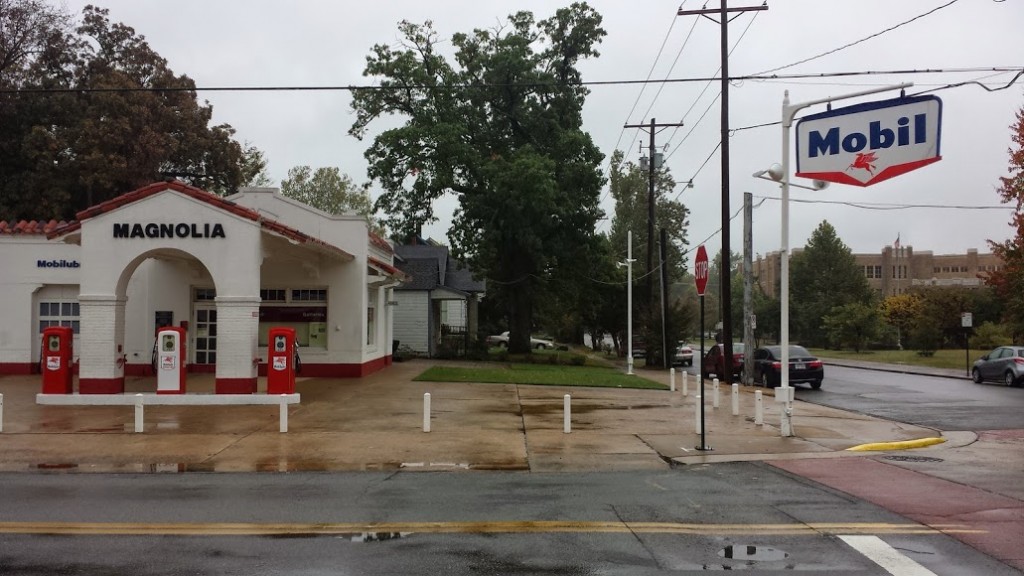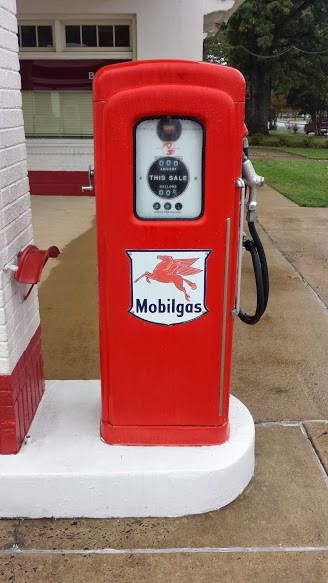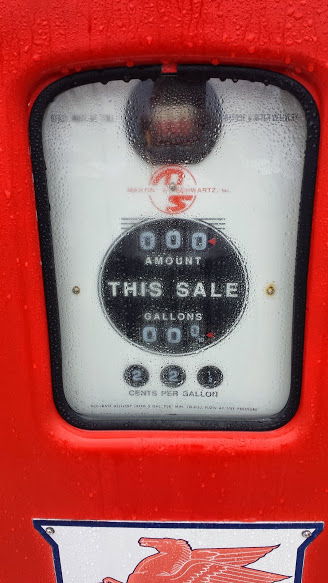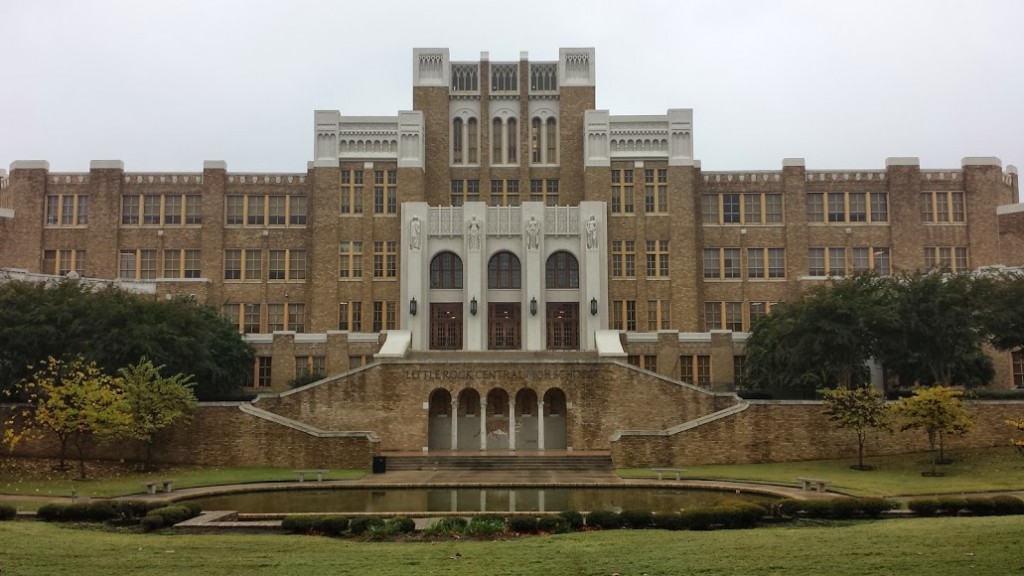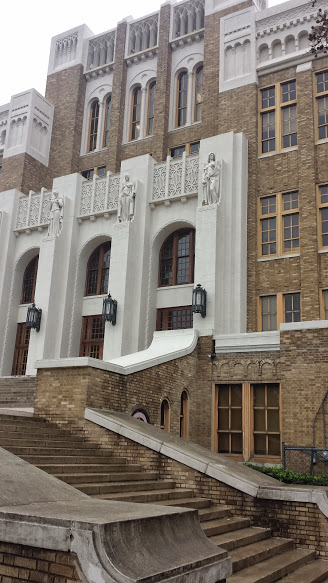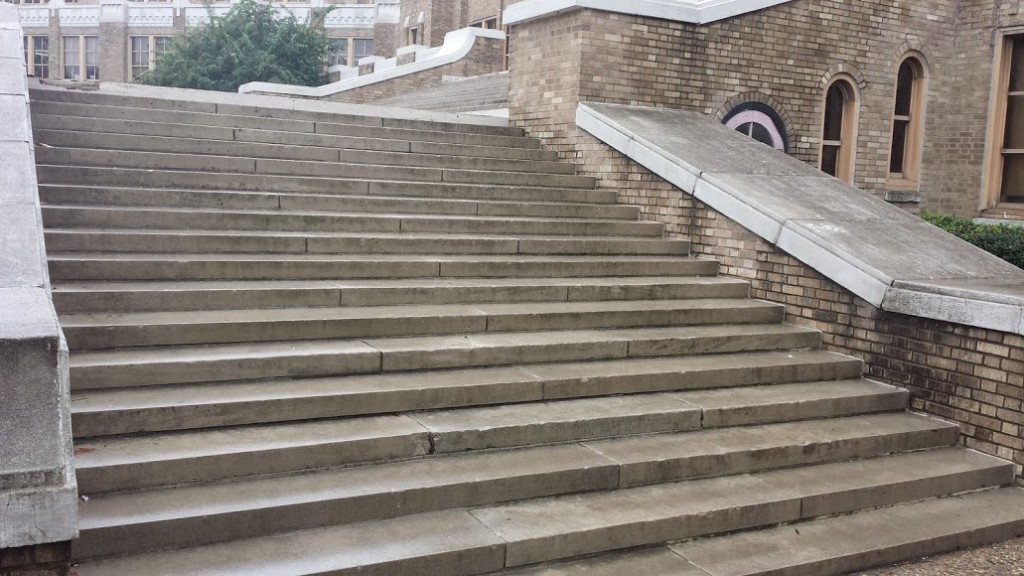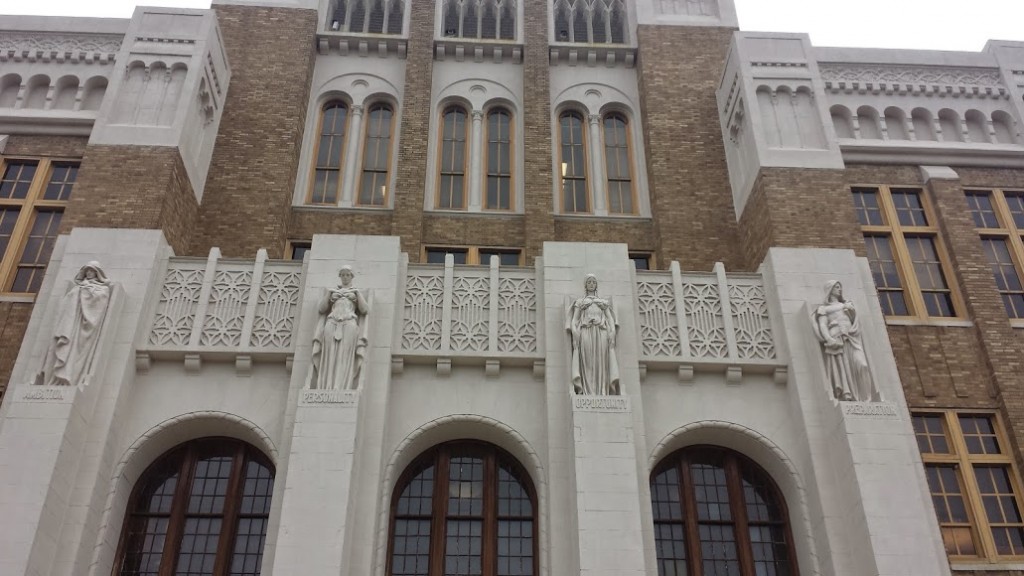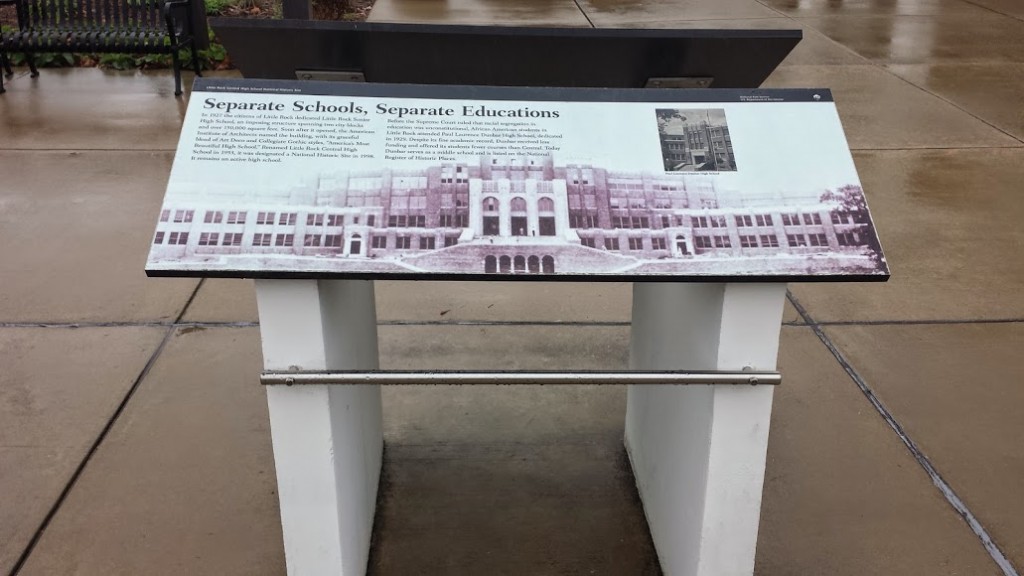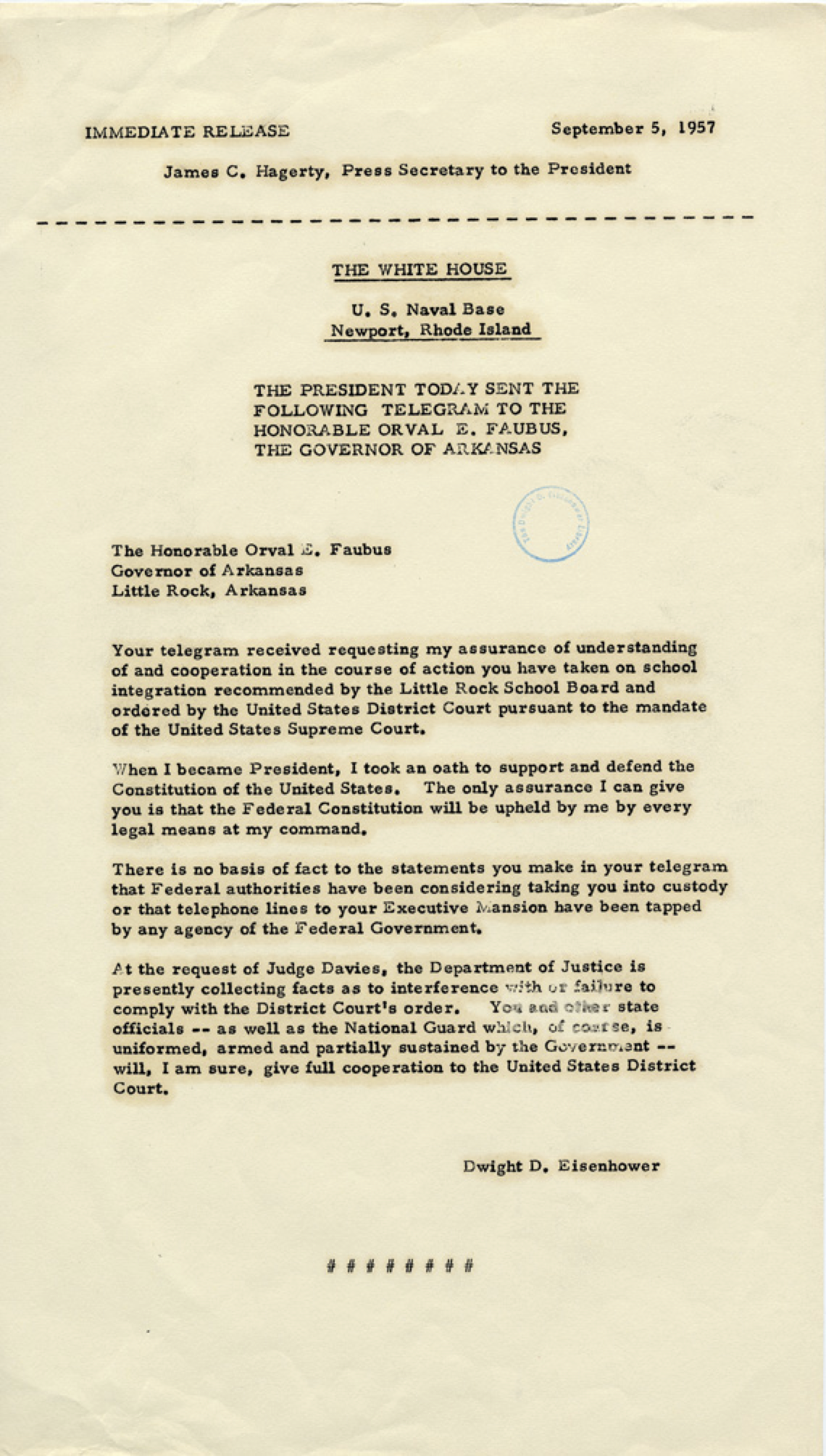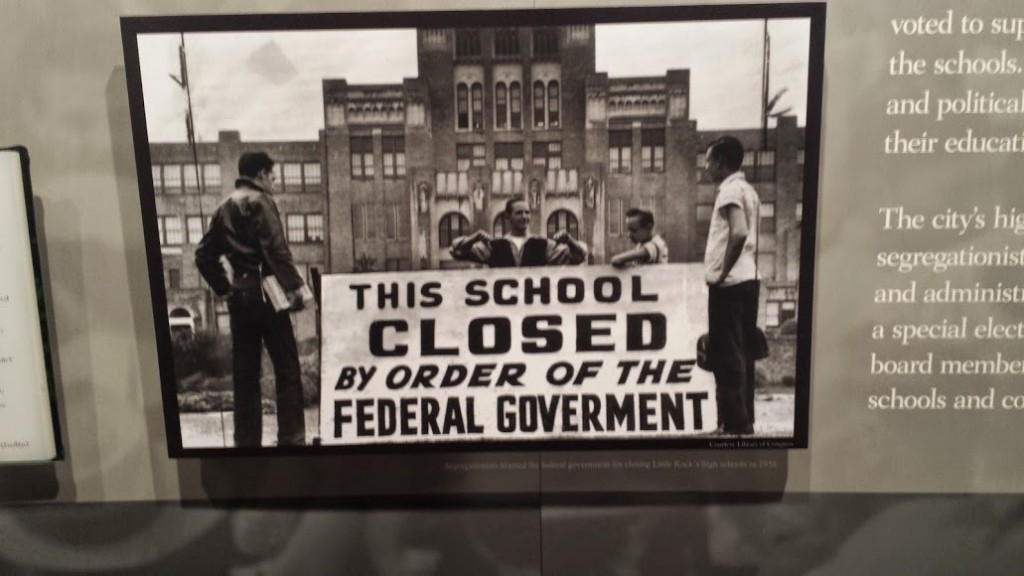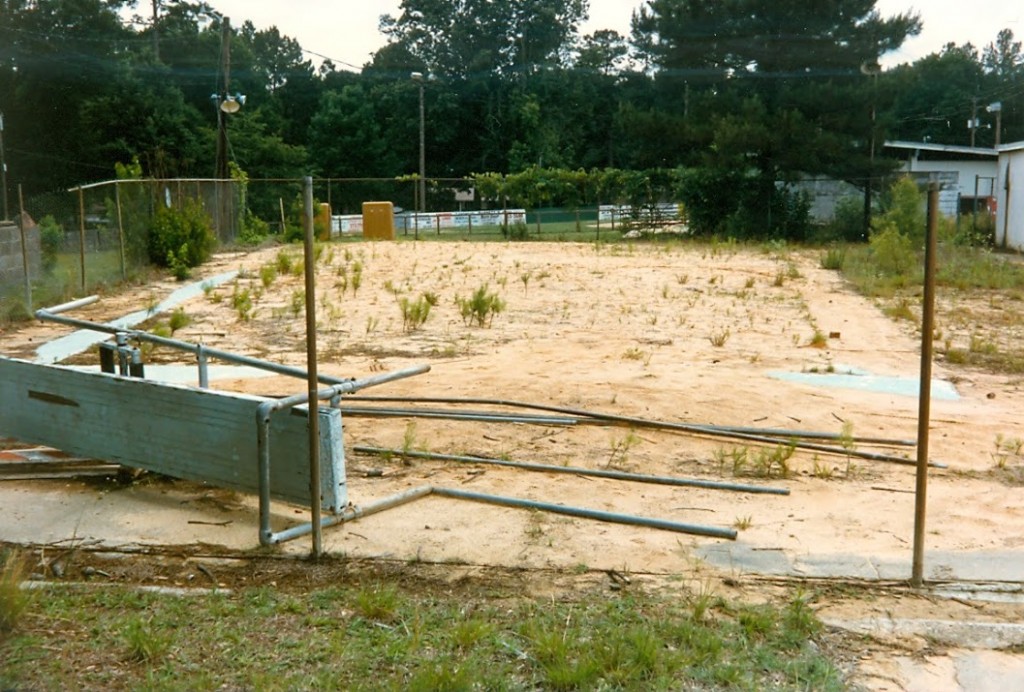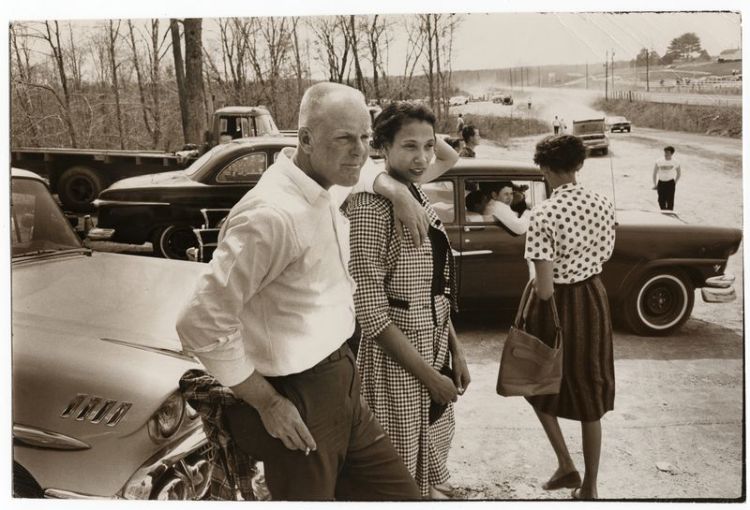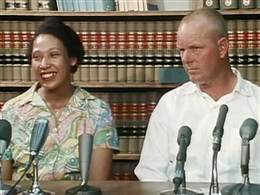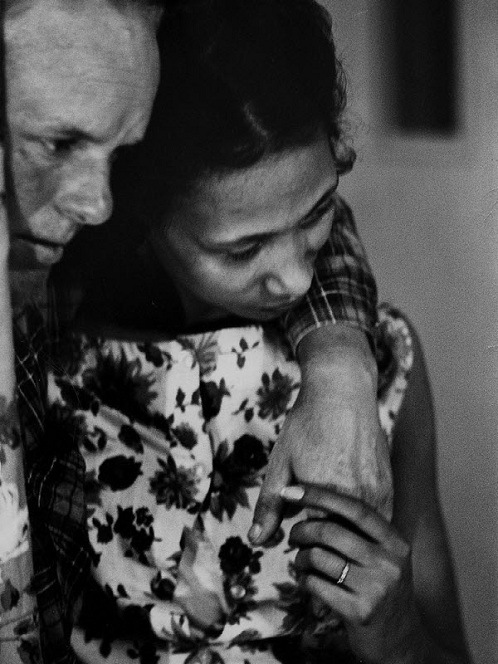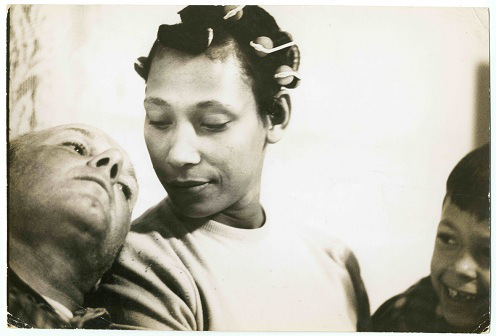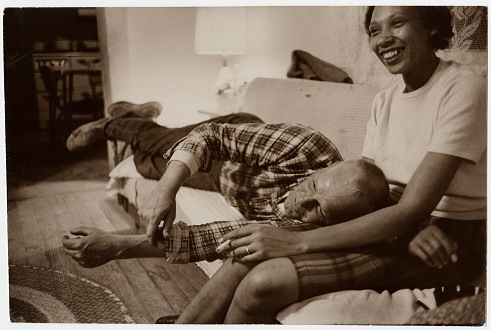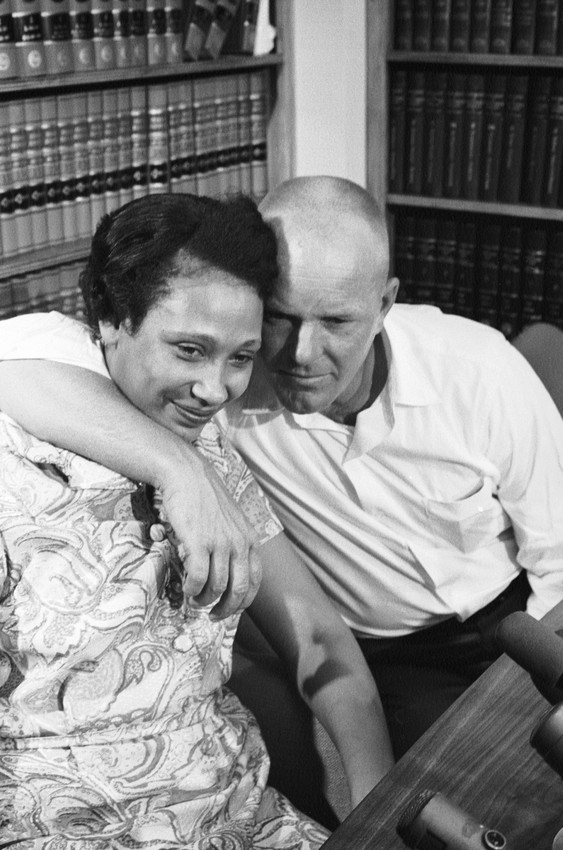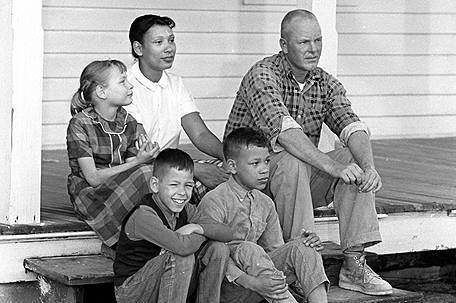The lecture notes are here.
Brown v. Board of Education
This is Linda Brown, the third-grader who challenged the Topeka, KS law requiring her to enroll in a segregate school.
Here is Brown’s family.
(Linda Brown of Topeka (left), with her parents, Leola and Oliver, and younger sister Terry. ) Here are all of the plaintiffs from the various companion cases to Brown v. Board, and their parents.
Front row: Vicki Henderson, Donald Henderson, Linda Brown, James Emanuel, Nancy Todd, Katherine Carper Back row: Zelma Henderson, Oliver Brown, Sadie Emanuel, Lucinda Todd, Lena Carper. Here is an other photograph of all of the students.
This is Monroe Elementary School at issue in Brown v. Topeka Board of Education. Linda Brown, third grade, was forced to enroll in this all-black school. It was 21 blocks from where she lived.
Here are photographs from inside Monroe Elementary.
The white-Sumner Elementary School was much closer to where Linda lived.
The path to the Supreme Court’s decision in Brown was long and arduous, and quite complicated. Here is a memo from Chief Justice Warren, dated May 7, 1954, querying whether it would be appropriate to have the state Attorneys General provide argument on the case as well.
Here is the oral argument sheet from decision day. Here is Chief Justice Warren’s draft of the final opinion.
Here is Chief Justice Warren’s draft of the final opinion.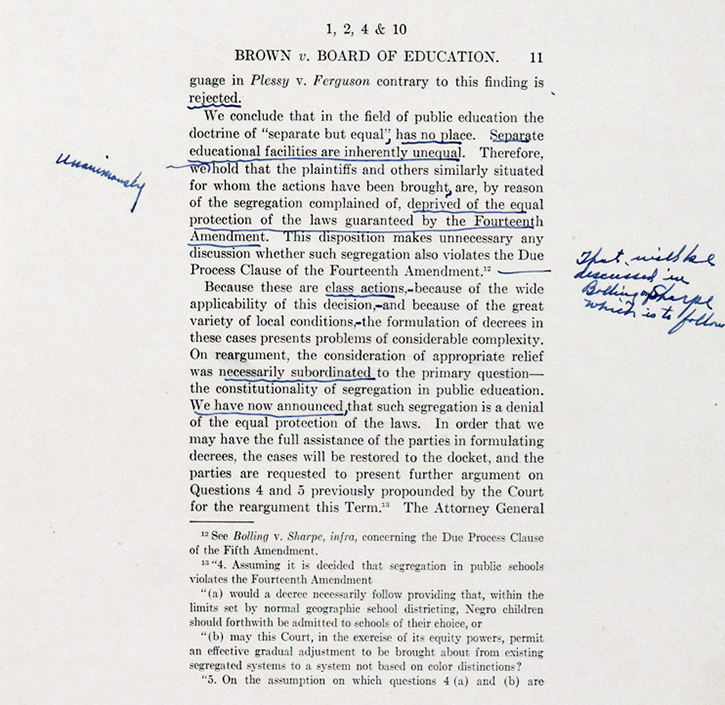 Here is a memo Justice Felix Frankfurter wrote to Chief Justice Earl Warren on decision day. It reads:
Here is a memo Justice Felix Frankfurter wrote to Chief Justice Earl Warren on decision day. It reads:
This is a day that will live in glory. It is also a great day in the history of the Court, and not in the least for the course of deliberation which brought about the results. I congratulate you. Felix Frankfurter.”
This iconic photograph is of George E.C. Hayes, Thurgood Marshall, and James Nabrit congratulating each other afther the Court announced the decision in Brown, on may 17, 1954. 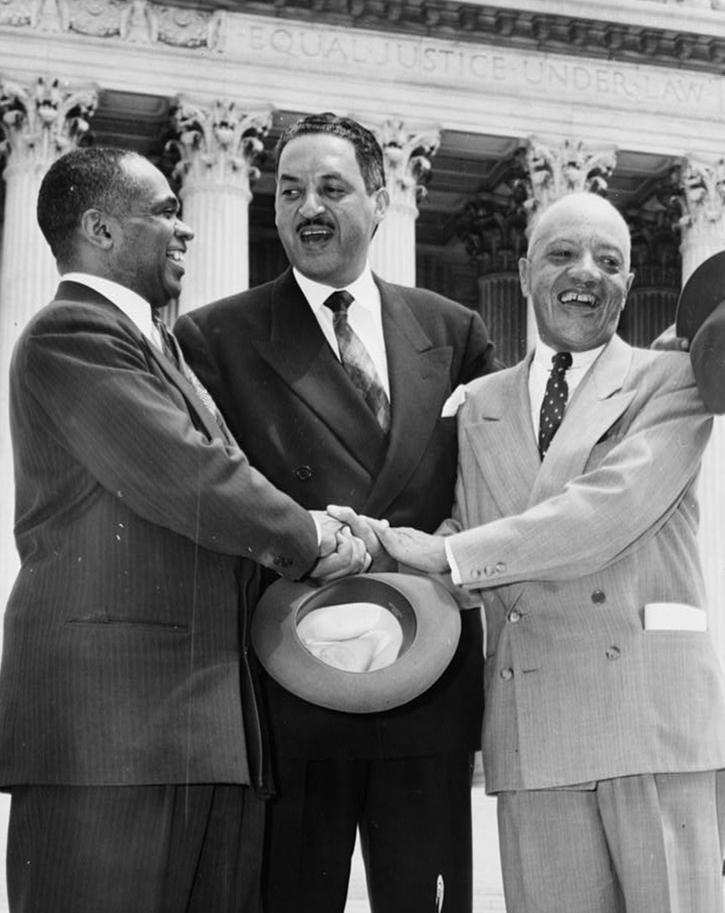 Here is the entire NAACP Legal Defense Fund legal team:
Here is the entire NAACP Legal Defense Fund legal team:
Nettie Hunt, and her daughter Nikie, sitting on the steps of the Supreme Court in 1954. The headline reads, “High Court Bans Segregation in Public Schools.” This newspaper headline, however, belies the greatest limitation of Brown. Desegregation was only ordered with “All deliberate speed.”
This newspaper headline, however, belies the greatest limitation of Brown. Desegregation was only ordered with “All deliberate speed.”
Bolling v. Sharpe This is Spottswood Thomas Bolling, Jr., twelve years old. He was not allowed to attend a new junior high school in Washington, D.C. reserved for for whites.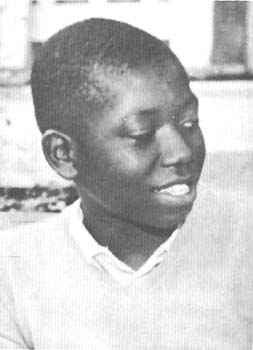
Cooper v. Aaron
Please take a moment to look at this slideshow of the Little Rock Nine.
The Little Rock 9:



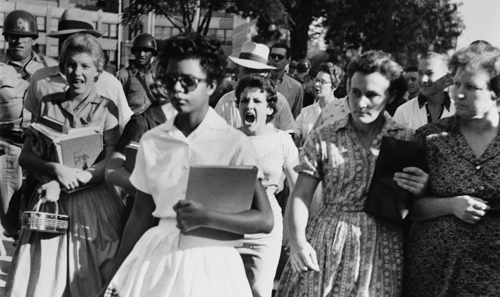
Gov. Orval Faubus holding up newspaper: “Guns Force Integration.”
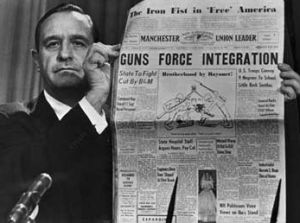
A very worthwhile trip if you ever make it to Little Rock.
During my recent trip to Little Rock, I visited the Little Rock Central High School. This is the locus of Cooper v. Aaron, and the school where the famous Little Rock 9 were escorted into the desegregated school by federal troops. What makes this national park site remarkable is that it is *still* an active high school.
Across the street from the school, they refurbished a gas station to appear as it did during the 1950s. It was at this gas station that the media filed their reports.
Gas was $.22 per gallon. Adjusted for inflation, that would be about $2.50 today.
As I approached the school, and climbed those famous steps, I was overcome by a very powerful feeling. Constitutional history was made right here. Looking across the street, I imagined the lynch mobs tormenting those poor students. As I came to the front door of the school, I peered inside, and imagined what those students felt when they entered. (I understand they were rushed to the Principal’s office so they were not intercepted). As chance would have it, classes were in session, so I could not enter the school.
The school is huge. It takes up an entire block, and has many sections.
Across the street from the High School was a visitor center that had some interesting exhibits.
Alas, this sign states an inaccuracy–We the People , as written in in 1787, “included only white male landowners.” I understand the point they were trying to make, but the Constitution itself was not so limited. In fact, it spoke in broad terms of people, and not men. It didn’t even use the word “slave,” but reverted to other euphemisms (other persons, etc.). At the time of the framing, in New Jersey at least, women had the right to vote. They may have even participated in the Constitutional ratification conventions. It would be more accurate for the Museum to have explained how the Constitution was interpreted. But it is not accurate–and somewhat misleading–to state it like this.
One of the cooler exhibits in the Visitor Center was a telegram President Eisenhower sent Governor Orval Faubus.
Here is a PDF of the original, courtesy of the National Archives:
When I became President, I took an oath to support and defend the Constitution of the United States. The only assurance I can give you is that the Federal Constitution will be upheld by me and by every legal means at my command.
Also at the Visitor Center were passes given to White Students, giving them permission to beat up the Black Students.
This was the original docket sheet for Cooper v. Aaron.
Palmer v. Thompson
Rather than desegregate a swimming pool, the city of Jackson, Mississippi filled it with cement.
In 1963, Alabama Governor George Wallace stood in the schoolhouse door at the University of Alabama. President Kennedy ordered the General of the Alabama National Guard to confront him.
Loving v. Virginia
Here are Mildred Delores Loving (nee Jeter) and Richard Perry Loving. They had three children, Donald, Peggy, and Sidney.
Here is a video of a documentary about their case.
Here is a trailer for a movie about Loving v. Virginia.
